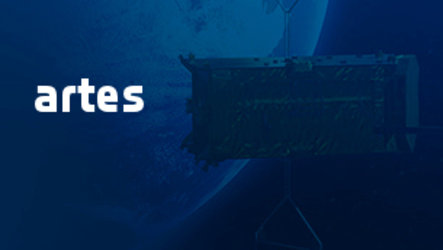Satellites helping to modernise railways
Satellites will soon make train travel safer by improving how the networks are controlled in remote areas where ground equipment is too costly.
For the first time in Europe, a project co-funded by ESA has shown how navigation and telecom satellites can be used together with existing rail signalling systems.
Railways rely on dedicated terrestrial networks that work as part of the European Railway Traffic Management System, ERTMS, used around Europe to control trains and provide instructions to drivers.
Trains pinpoint their location by means of electronic beacons positioned along the track every 500–1500 m, transmitting the information via a dedicated terrestrial cell network to control centres.
The centres then transmit route data, recommended speeds and other information back to drivers over the same network.
Satellites will increase the viability of ERTMS for low-traffic lines by avoiding the need for expensive track equipment and dedicated telecom networks.
Virtual beacons are used instead – digital points in a railway database – and the train’s position is fixed by satnav.

The Train Integrated Safety Satellite System project, or 3InSat for short, co-funded by ESA’s Integrated Applications Promotion programme, has developed an integrated terrestrial and satcom system that delivers the vital link between train drivers and their control centres.
In April, this approach was demonstrated on a passenger train on the Italian island of Sardinia.
In the coming months, the 3InSat team led by Ansaldo STS and partners will verify the telecom system, which calls on Inmarsat’s satellite-based Broadband Global Area Network and Vodafone’s 3G/4G Machine-to-Machine data services.
In September, a second series of tests will verify the satellite-based location services that together with the telecom network will eventually be integrated into the ERTMS testbed in Sardinia.
At the end of the year, the satcom system will go live in Australia with a train command and signalling system. And in the near future, it could be adopted by regional lines in Europe.

“The new telecom service we have been testing in Sardinia as part of 3InSat is unprecedented for train control systems,” said Francesco Rispoli of Ansaldo STS.
“It paves the way for realising cost-efficient and rapidly deployable signalling systems using, for the first time, non-dedicated telecom networks.”
ESA’s Michele Castorina added: “3InSat is an exciting opportunity to demonstrate the tremendous potential of space-based technologies to help the railway sector meet its evolving needs.”















 Germany
Germany
 Austria
Austria
 Belgium
Belgium
 Denmark
Denmark
 Spain
Spain
 Estonia
Estonia
 Finland
Finland
 France
France
 Greece
Greece
 Hungary
Hungary
 Ireland
Ireland
 Italy
Italy
 Luxembourg
Luxembourg
 Norway
Norway
 The Netherlands
The Netherlands
 Poland
Poland
 Portugal
Portugal
 Czechia
Czechia
 Romania
Romania
 United Kingdom
United Kingdom
 Slovenia
Slovenia
 Sweden
Sweden
 Switzerland
Switzerland





























